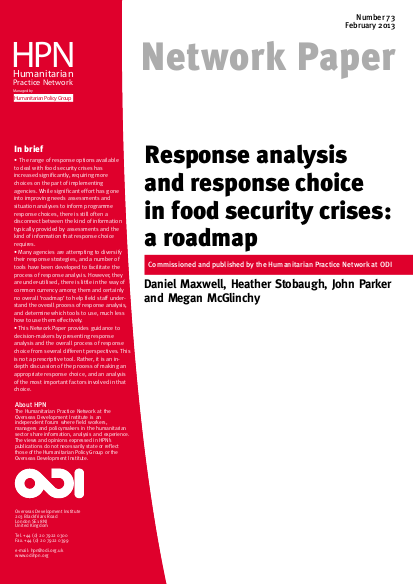
Most of the individuals interviewed in the course of this research emphasised that the creation of another prescriptive tool would not be very helpful. But there was a recognised need for guidance that would help decision- makers to navigate the complex set of choices and existing tools, manage the constraints and risks and make the best use of the evidence and analysis that exists in order to inform the most rational and needs-based approach to response. This Network Paper addresses this need. It provides guidance to decision-makers by presenting response analysis and the overall process of response choice from several different perspectives. This is not a prescriptive tool. Rather, it is an in-depth discussion of the process of making an appropriate response choice, and an analysis of the most important factors involved in that choice.
The paper is in four parts. The following section reviews definitions and suggests a roadmap of the decision-making process about response choices, based on the interview results. No single agency or individual interviewed suggested precisely this kind of approach – this emerged from the analysis of numerous key informant interviews. The second section explores the factors that decision-makers take into consideration when making response choices. The third part examines the constraints to evidence-based decision- making and outlines good practice in managing them. The fourth section examines existing response analysis tools, explores the reasons why they are often not utilised and maps existing tools to the specific types of decisions for which they are designed. The final sections of the paper outline the challenges of incorporating response analysis information into assessments, and raise some questions for future practice.